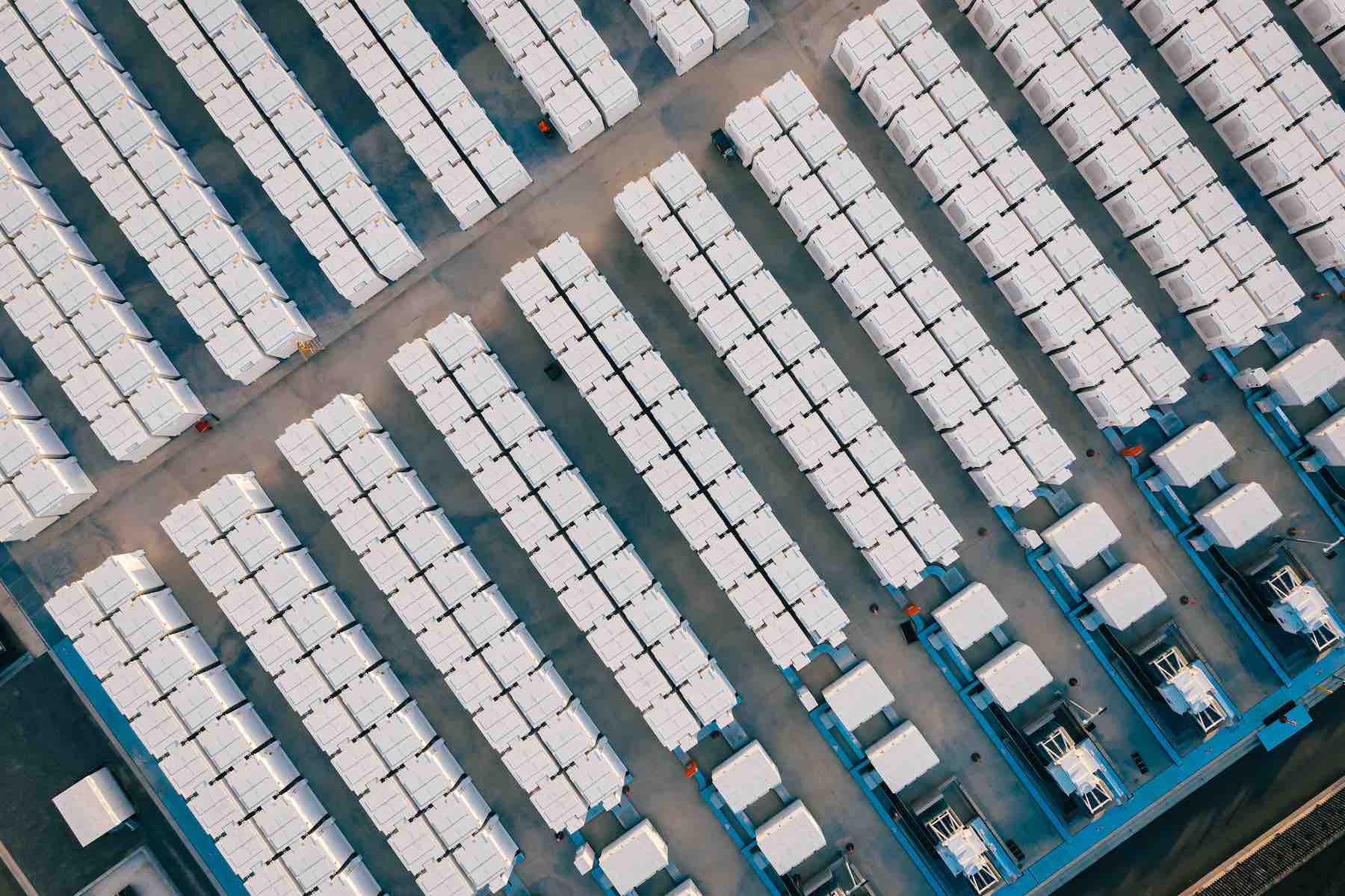

The Rangebank Battery in Victoria. Source: Eku Energy
A “tidal wave” of big batteries and record amount of new solar and wind are joining forces to drive down electricity prices and deliver Australia’s target of 82 per cent renewables by 2030, but only if current momentum can be maintained.
A major new report says calendar 2024 is set to deliver a record amount of new solar and wind – nearly half of it from rooftop PV – and a major uptick in battery storage. But it warns of the “clear and present threat” from energy policy chaos, just as Australia hits its stride in the transition to renewables.
The Climate Energy Finance report, published on Tuesday, finds Australia on track to meet its 82 per cent by 2030 renewable energy target, thanks to a strong uptick in renewable energy project proposal, construction and commissioning over the course of 2024.
Add to this the continued growth of Australia’s world-leading rooftop solar market and booming large-scale battery energy storage system deployments and the result, the report says, is that electricity prices are likely to finally see sustained downward pressure.
CEF director and report author Tim Buckley says data from the Clean Energy Regulator puts the market on track for a record 7.2-7.5 gigawatts (GW) of new solar and wind, including 3.15 GW of rooftop PV, to be added to the grid in 2024, taking the renewables share to at least 45% in 2025.
Taking rooftop PV out of the equation and adding in utility-scale energy storage, Rystad Energy puts the total of big solar, wind and batteries starting construction at more than 8 GW, including the two huge LIghtsource bp projects announced as shovel ready just this week.
Rystad’s David Dixon says big batteries are the standout for the year, with around 4.9 GW / 13 GWh breaking ground in 2024, in the race to firm the growing renewables share. Large-scale solar and wind had 3.4 GW starting construction.
All of this, says the CEF report, means Australia has joined the broader global trend of record renewable energy installations in 2024, despite inflation and in the face of predictions of assumed constraints of electricity grids to handle high variable renewable energy (VRE) penetration.
“BESS deployments in particular are booming, and the result is that electricity prices are likely to finally see sustained downward pressure, overdue relief from the fossil fuel driven energy price hyperinflation since Putin’s Ukraine invasion,” the report says.
Consumer energy resources (CER) – led by rooftop solar, but increasingly also including behind the meter batteries, electric vehicles and demand response are also driving momentum, along with the electrification of everything.
But continuing on this decarbonisation path is by no means a given, the report says, particularly as the Coalition ramps up its pre-election push to bring nuclear power into the mix.
“Complacency and policy chaos is a material risk,” Buckley says.
“There remains a clear and present threat that Australia loses momentum and acts too slowly, or is divided by the climate and energy wars stoked by the nuclear grifters of the LNP.
“A failure to sustain our accelerating transition to low-cost, clean, firmed renewables at the speed and scale needed to slash soaring energy prices, reduce emissions, and meet the renewable energy needs of zero-emissions industries of the future would do profound damage to our economy, prosperity and climate.”
To avoid this, the report urges state governments to do their bit to keep up momentum, particuarly NSW, ahead of the looming closure of the Eraring coal plant, and Queensland, following its recent change of government.
Federally, the CEF calls for the Albanese government to set a pre-election 2035 emissions reduction target of at least 75%, to signal policy certainty to investors and provide the legislated foundation for an accelerated energy market transition to firmed renewables.
The report also calls on federal Labor to upscale the next round of its Capacity Investment Scheme from 6GW to 10GW, to expedite and accelerate energy market transition in line with the 2030 target.
On coal, the report suggests the requirement of a formal commitment to scheduled plant retirements as part of state-federal Renewable Energy Transformation Agreements to ensure clarity for planning and implementation of replacement capacity in the time and scale required.
On nuclear, the report calls on states governments to reaffirm that state legislative bans on will remain in place until the economics of nuclear are “substantiated with credible studies rather than flights of fantasy.”
At a federal level, it calls for the report of the federal Commission of Inquiry into Nuclear Energy to expedite and published well ahead of the 2025 federal election “to affirm and restore investor confidence” in the transition to firmed renewables as the solution to Australia’s economy-wide decarbonisation.
“The CSIRO confirmed yet again in its GenCost 2024-25 Report out last week that the lowest-cost form of new generation is solar and wind with firming and transmission, with nuclear costing twice as much,” Buckley says.
“Now is the time for us to double down, build on our domestic momentum, and deliver an 82% renewables-powered Australia by 2030, to the benefit of all Australians.”
A solar farm and big battery proposed for development north of Geelong has been fast-tracked…
Activist shareholder forces another global energy giant to return money to investors and double down…
Peter Dutton says he will lower the cost of gas. But will that translate into…
Ausgrid’s Marc England explains why local networks are preparing their own ISP, and discussed batteries…
Distributed networks say they can host vast amounts of wind, solar and storage capacity at…
Developer of the biggest battery yet in South Australia says the company has struggled to…